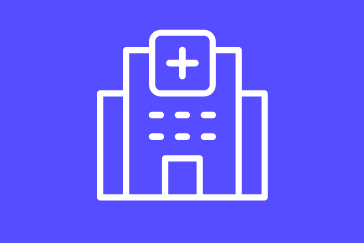
Managing Patients with Obesity Insights and Best Practices
Course Overview
This course provides an overview of obesity, describes the assessment and classification of obesity, describes how to identify appropriate candidates for weight loss treatment, and reviews evidence-based guidelines in the treatment of obesity.
Goal
This course is designed to enhance healthcare professionals’ ability to provide optimal care to complex patients and contribute to improved population health outcomes. Course expiration date: 6/30/2025
Managing Patients with Obesity Insights and Best Practices
Course Overview
This course provides an overview of obesity, describes the assessment and classification of obesity, describes how to identify appropriate candidates for weight loss treatment, and reviews evidence-based guidelines in the treatment of obesity.
Goal
This course is designed to enhance healthcare professionals’ ability to provide optimal care to complex patients and contribute to improved population health outcomes. Course expiration date: 6/30/2025

Medical Emergencies – ProACLS Advanced Cardiac Life Support
Course overview
Advanced Cardiac Life Support (ACLS) includes a series of algorithmic medical procedures and techniques designed for the urgent treatment of cardiac arrest, stroke, and similar life-threatening cardiac emergencies. The course expands upon basic life support with more advanced skills, such as Electrocardiogram (ECG) rhythm interpretation for core ACLS rhythms, airway management and appropriate adjuncts, ACLS drugs and pharmacology, practical application of ACLS rhythms and drugs, and effective high-performance team skills for Basic Life Support and ACLS.
Goal This certification is designed to equip health professionals with knowledge of Advanced Life Support Procedures. Course expiration date: 5/30/2025
Medical Emergencies – ProACLS Advanced Cardiac Life Support
Course overview
Advanced Cardiac Life Support (ACLS) includes a series of algorithmic medical procedures and techniques designed for the urgent treatment of cardiac arrest, stroke, and similar life-threatening cardiac emergencies. The course expands upon basic life support with more advanced skills, such as Electrocardiogram (ECG) rhythm interpretation for core ACLS rhythms, airway management and appropriate adjuncts, ACLS drugs and pharmacology, practical application of ACLS rhythms and drugs, and effective high-performance team skills for Basic Life Support and ACLS.
Goal This certification is designed to equip health professionals with knowledge of Advanced Life Support Procedures. Course expiration date: 5/30/2025

State Regulation – Human Trafficking and the Role of Healthcare Professionals
Course overview
This course will provide an overview of human trafficking, discuss at-risk groups and populations for exploitation, and address the statistics and prevalence of this criminal industry within the United States. Physical and behavioral indicators of victims will be identified, and intervention techniques with suspected trafficking victims, especially those within the healthcare setting, will be discussed.
Goal This course is designed to equip health professionals with knowledge to identify victims of human trafficking. Course expiration date: 2/8/2024
State Regulation – Human Trafficking and the Role of Healthcare Professionals
Course overview
This course will provide an overview of human trafficking, discuss at-risk groups and populations for exploitation, and address the statistics and prevalence of this criminal industry within the United States. Physical and behavioral indicators of victims will be identified, and intervention techniques with suspected trafficking victims, especially those within the healthcare setting, will be discussed.
Goal This course is designed to equip health professionals with knowledge to identify victims of human trafficking. Course expiration date: 2/8/2024

Medical Chaperone Training
Course overview
This course delivers a comprehensive understanding of a medical chaperone’s role and responsibilities. It highlights their critical part in preserving patient-provider interaction integrity, patient advocacy, and adherence to ethical and legal norms. Course content covers chaperone responsibilities, interaction best practices, gowning and draping procedures, appropriate communication, handling intimate examinations, maintaining professional boundaries, and harassment scenarios. It includes HIPAA regulations education and details on documentation and reporting. Upon course completion, students will possess the necessary skills to effectively act as medical chaperones, supporting patients while maintaining professionalism and legal compliance.
Goal
This course is designed to train students on the role of the medical chaperone. Course expiration date: 6/20/2026
Medical Chaperone Training
Course overview
This course delivers a comprehensive understanding of a medical chaperone’s role and responsibilities. It highlights their critical part in preserving patient-provider interaction integrity, patient advocacy, and adherence to ethical and legal norms. Course content covers chaperone responsibilities, interaction best practices, gowning and draping procedures, appropriate communication, handling intimate examinations, maintaining professional boundaries, and harassment scenarios. It includes HIPAA regulations education and details on documentation and reporting. Upon course completion, students will possess the necessary skills to effectively act as medical chaperones, supporting patients while maintaining professionalism and legal compliance.
Goal
This course is designed to train students on the role of the medical chaperone. Course expiration date: 6/20/2026

Expanding the Role of Urgent Care Centers in Emergency and Disaster Response
The pandemic crisis has presented significant challenges and opportunities for Urgent Care Centers and healthcare providers across the county, which illustrates the importance of learning from this experience to manage through the current crisis and become better prepared in the future.
In March of 2018, the Healthcare Emergency Preparedness Information Gateway (TRACIE) published their findings from UCCs in 44 states to collect their perceptions on the role their urgent care centers could play in the nations healthcare preparedness and response activities. We will take a brief retrospective view of this report as a starting point in the context of todays COVID-19 epidemic and discuss a framework for UUCs moving forward.
We will take a look at the impact of the nation-wide public health emergency and the federal healthcare priorities recommendations for the COVID-19 Stimulus and opportunities for UCC participation. The discussion will wrap up with steps that individual and regional UCCs can take to be prepared for future emergencies and disasters.
Expanding the Role of Urgent Care Centers in Emergency and Disaster Response
The pandemic crisis has presented significant challenges and opportunities for Urgent Care Centers and healthcare providers across the county, which illustrates the importance of learning from this experience to manage through the current crisis and become better prepared in the future.
In March of 2018, the Healthcare Emergency Preparedness Information Gateway (TRACIE) published their findings from UCCs in 44 states to collect their perceptions on the role their urgent care centers could play in the nations healthcare preparedness and response activities. We will take a brief retrospective view of this report as a starting point in the context of todays COVID-19 epidemic and discuss a framework for UUCs moving forward.
We will take a look at the impact of the nation-wide public health emergency and the federal healthcare priorities recommendations for the COVID-19 Stimulus and opportunities for UCC participation. The discussion will wrap up with steps that individual and regional UCCs can take to be prepared for future emergencies and disasters.

How to Treat Neck and Spine Injuries in Urgent Care Centers
Neck pain is a complaint commonly encountered in urgent care. Many patients, from a variety of socioeconomic and cultural backgrounds, will present to an urgent care center with a chief complaint of neck pain and the discomfort can be a debilitating to a patient. It is the providers responsibility to appropriately evaluate and manage the condition.
UCCs differ in that they treat all ages of patients, from the very young to the elderly. Clinicians must be able to locate and determine the etiology and severity of the injury in patients with acute neck pain. This is especially true for the very young and geriatric populations. A thorough history and physical examination, and a heightened awareness of any red flags that signal a more serious underlying serious condition should be used for treating this population. This systemic approach ensures that medical decisions and treatment options are proper to the individual patient who presents with neck pain.
How to Treat Neck and Spine Injuries in Urgent Care Centers
Neck pain is a complaint commonly encountered in urgent care. Many patients, from a variety of socioeconomic and cultural backgrounds, will present to an urgent care center with a chief complaint of neck pain and the discomfort can be a debilitating to a patient. It is the providers responsibility to appropriately evaluate and manage the condition.
UCCs differ in that they treat all ages of patients, from the very young to the elderly. Clinicians must be able to locate and determine the etiology and severity of the injury in patients with acute neck pain. This is especially true for the very young and geriatric populations. A thorough history and physical examination, and a heightened awareness of any red flags that signal a more serious underlying serious condition should be used for treating this population. This systemic approach ensures that medical decisions and treatment options are proper to the individual patient who presents with neck pain.

Understanding Chest Trauma and Abdominal Injuries in Urgent Care Centers
Chest trauma and abdominal injuries are modern major health problems with a high mortality rate and are both life-threatening conditions often involving other anatomical regions requiring concurrent diagnosis and treatment. Blunt chest trauma produces 25% of traumatic deaths, contributing to the 50% of global mortality caused by trauma. Blunt chest trauma is commonly associated with multiple-organ damage that favors catastrophic patient outcome. Abdominal injuries are a frequent diagnosis in multiple trauma, and the presence of extra-abdominal injuries and sepsis produces a significant effect on the outcome. The standard management of chest trauma and abdominal injuries may become multidisciplinary through patient transportation from urgent care to surgery and then in ICU. Early diagnosis and initial assertive management within the urgent care setting are the keys in reducing morbidity and mortality. Course expiration date: 3/10/2026
Understanding Chest Trauma and Abdominal Injuries in Urgent Care Centers
Chest trauma and abdominal injuries are modern major health problems with a high mortality rate and are both life-threatening conditions often involving other anatomical regions requiring concurrent diagnosis and treatment. Blunt chest trauma produces 25% of traumatic deaths, contributing to the 50% of global mortality caused by trauma. Blunt chest trauma is commonly associated with multiple-organ damage that favors catastrophic patient outcome. Abdominal injuries are a frequent diagnosis in multiple trauma, and the presence of extra-abdominal injuries and sepsis produces a significant effect on the outcome. The standard management of chest trauma and abdominal injuries may become multidisciplinary through patient transportation from urgent care to surgery and then in ICU. Early diagnosis and initial assertive management within the urgent care setting are the keys in reducing morbidity and mortality. Course expiration date: 3/10/2026

Anesthesia Use in Urgent Care Centers
The American Society of Anesthesiologists lists four levels of sedation and analgesia: minimal sedation/anxiolysis, moderate sedation/analgesia, deep sedation/analgesia, and general anesthesia. Of these, minimal sedation/anxiolysis is most relevant to urgent care centers. Urgent care centers may provide local anesthesia, which can be administered topically or as infiltration anesthesia. In this course, the definitions of procedural sedation, office-based surgery, minimal sedation/anxiolysis, and local anesthesia will be given. Best practices and guidelines provided by American Association of Nurse Anesthetists, the American Society of Anesthesiologists, and other organizations will be discussed. Rules and regulations provided by the federal government and by the states will also be covered. Course expiration date: 4/19/2026
Anesthesia Use in Urgent Care Centers
The American Society of Anesthesiologists lists four levels of sedation and analgesia: minimal sedation/anxiolysis, moderate sedation/analgesia, deep sedation/analgesia, and general anesthesia. Of these, minimal sedation/anxiolysis is most relevant to urgent care centers. Urgent care centers may provide local anesthesia, which can be administered topically or as infiltration anesthesia. In this course, the definitions of procedural sedation, office-based surgery, minimal sedation/anxiolysis, and local anesthesia will be given. Best practices and guidelines provided by American Association of Nurse Anesthetists, the American Society of Anesthesiologists, and other organizations will be discussed. Rules and regulations provided by the federal government and by the states will also be covered. Course expiration date: 4/19/2026

Identifying and Treating Bug Bites and Infestations in Urgent Care Centers
Bug bites are one of the most common presenting complaints amongst patients at urgent care centers. Some are relatively harmless, while others can lead to pain, redness, itching, stinging, and swelling. Rarely, serious complications, including anaphylaxis, can occur. In order to provide proper treatment, healthcare professionals in the urgent care setting must be aware of current recommendations on diagnostic work up, triage, and treatment for patients presenting with bug bites.
In this course, you will learn to identify and treat the most commonly encountered bug bites in the urgent care setting. Course expiration date: 3/3/2026
Identifying and Treating Bug Bites and Infestations in Urgent Care Centers
Bug bites are one of the most common presenting complaints amongst patients at urgent care centers. Some are relatively harmless, while others can lead to pain, redness, itching, stinging, and swelling. Rarely, serious complications, including anaphylaxis, can occur. In order to provide proper treatment, healthcare professionals in the urgent care setting must be aware of current recommendations on diagnostic work up, triage, and treatment for patients presenting with bug bites.
In this course, you will learn to identify and treat the most commonly encountered bug bites in the urgent care setting. Course expiration date: 3/3/2026
 Learning
Learning